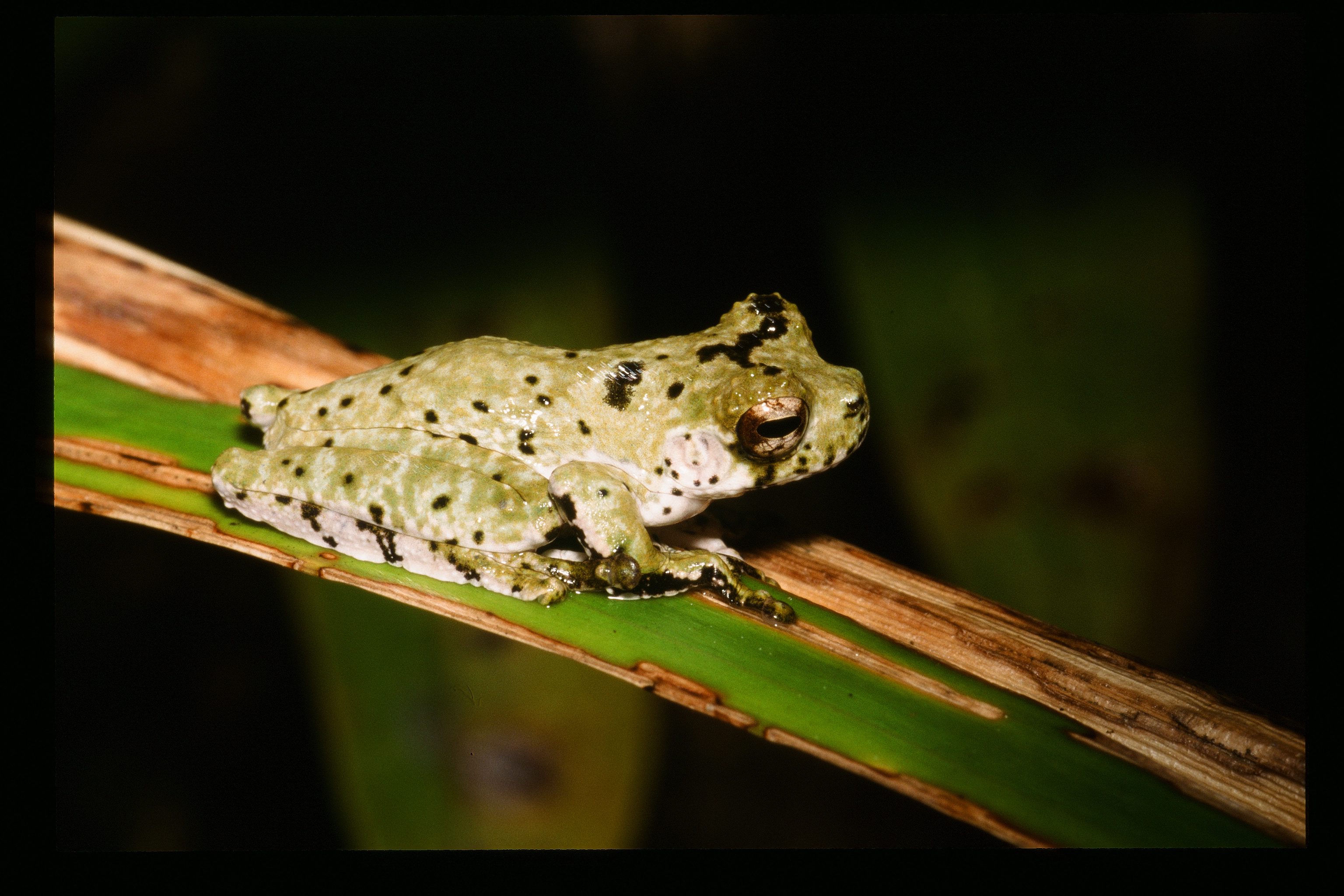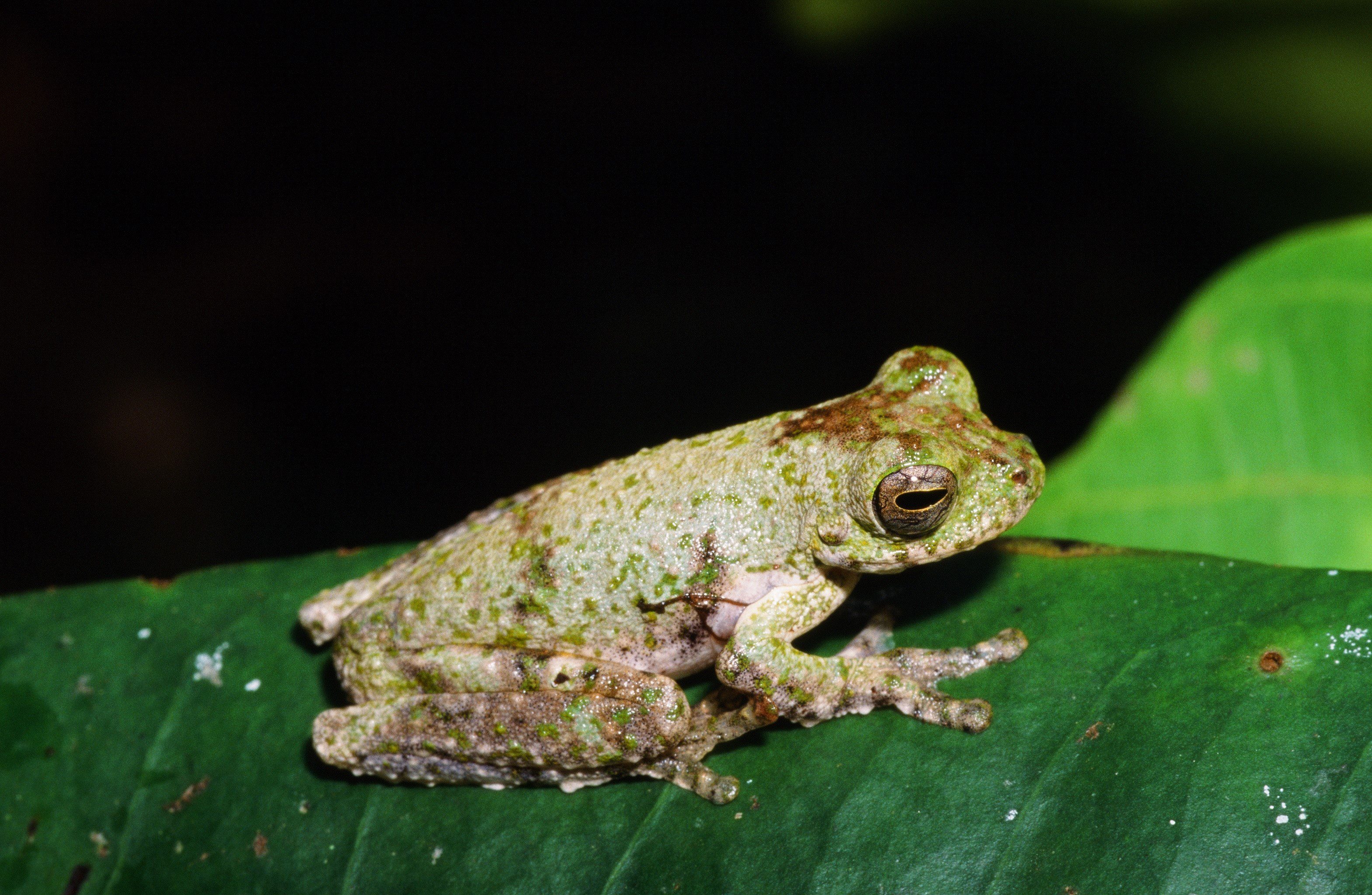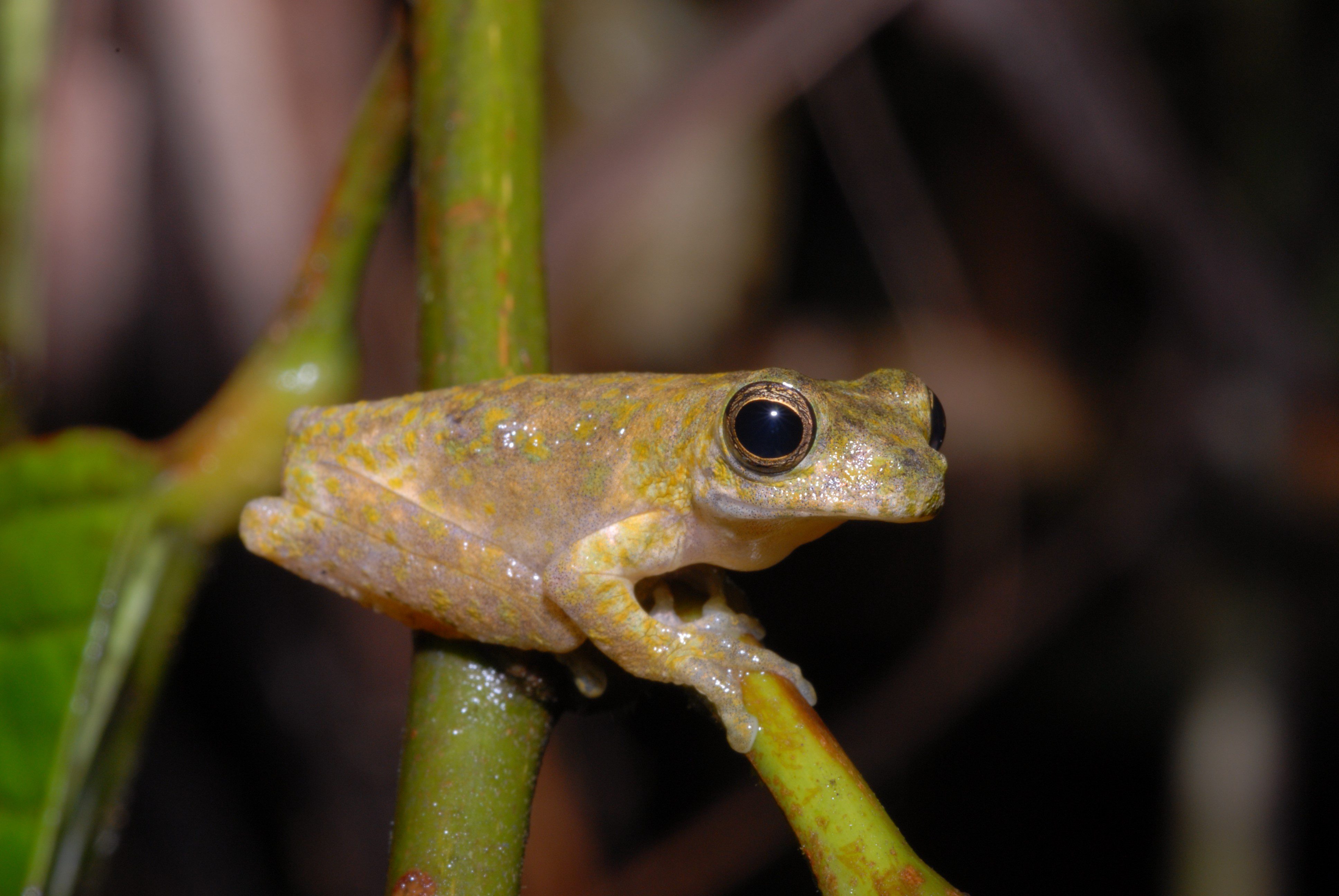Do you like frogs? Good news: Five new tree frog species have been identified on the island of New Guinea, and some have a clever (and gross) way to disguise themselves by looking rather fecal.
The species are all in the Litoria genus, and “hail from hill and lower montane forest along the southern versant of Papua New Guinea’s Central Cordillera”, as described by the team of researchers from the South Australian Museum, Queensland Museum, and Griffith University in a new paper. The five fresh frog finds are named Litoria daraiensis, Litoria gracilis, Litoria haematogaster, Litoria lisae, and Litoria naispela.
“Tadpoles of one new species, Litoria naispela actually live in water collected in tree hollows, a behavior not previously documented in frogs from New Guinea,” explained study author Dr Paul Oliver in a statement. “Litoria naispela also has juveniles that have color and patterning that closely resembles bird droppings – we think this is a form of defensive masquerade.”

Luckily for Litoria naispela, it doesn’t resemble feces as an adult. Image Credit: Steve Richards
Despite its poopy appearance, L. naispela (the Crater Mountain Treehole Frog) gets its name from a Melanesian word meaning “pretty” or “beautiful”.

Litoria lisae, aka Lisa’s Treefrog. Image Credit: Steve Richards
L. Lisae (aka Lisa’s Treefrog) is named in honor of the senior author’s wife, Lisa Capon.

Litoria daraiensis, aka the Darai Plateau Treefrog. Image Credit: Steve Richards
L. daraiensis (the Darai Plateau Treefrog) is known from just one location on the Darai Plateau, as is L. haematogaster (the Red-bellied Treefrog), named for its bright red posteroventral surfaces.

Litoria haematogaster, aka the Red-bellied Treefrog. Image Credit: Steve Richards
L. gracilis (the Slender Spotted Treefrog) is flatteringly named after a Latin term meaning “graceful”.

Litoria gracilis, aka the Slender Spotted Treefrog. Image Credit: Steve Richards
This revelation is the result of phylogenetic analysis, differences in morphology and advertisement calls, and over 30 years of fieldwork by senior author Dr Steve Richards, who said that “I spent a huge amount of time waiting at night beside tree holes in rain, hail and (moon)shine, for frogs to emerge in order to find these amazing species, and to try and learn about their biology.”
“New Guinea has more species of frogs than any other island in the world and most are found nowhere else,” Dr Richards explained. “New discoveries like this show that this richness of species is also matched by a diverse set of ways to make a living as a frog!”
New Guinea is in Melanesia, a region of Oceania. A study published in 2022 found that “Melanesia has the world’s most diverse insular amphibian fauna, with over 7 percent of recognized global frog species in less than 0.7 percent of the world’s land area, and over 97 percent of species endemic.”
In fact, even more species of tree frogs in the Litoria genus were discovered in 2019, including one named after its Pinnochio-like nose, another given a name translating to “cheeky monkey”, and another named after Pterodactylus due to its gliding abilities.
“Amphibian populations are in decline globally,” said the South Australian Museum’s Acting Director Justine van Mourik. “Through the important work of our taxonomists, we are continuing to discover species, learn the vital role they play within our natural environments and better understand how we can protect these amazing species now and into the future.”
The study is published in the journal Zootaxa.
Source Link: Newly Discovered Frog's Camouflage Makes It Look Like Bird Poop